
We’ve had an opportunity to take a close look at the all new, track-only, 991 GT3 Cup Car and examine it’s suspension. Since we have our street version sitting here in the garage, we’ve decided to put together a suspension comparison as well.The two cars are surprisingly very similar to each other as far as the suspension goes. This generation of GT3 is closer to the Cup car than a standard Carrera; closer than previous versions of the GT3. That said, there are some differences that are worth pointing out.
Since it’s often hard to distinguish the two cars from each other in photos, you can identify the image by a label in the upper left corner of each image.
Let’s Dive Right Into The Front Suspension
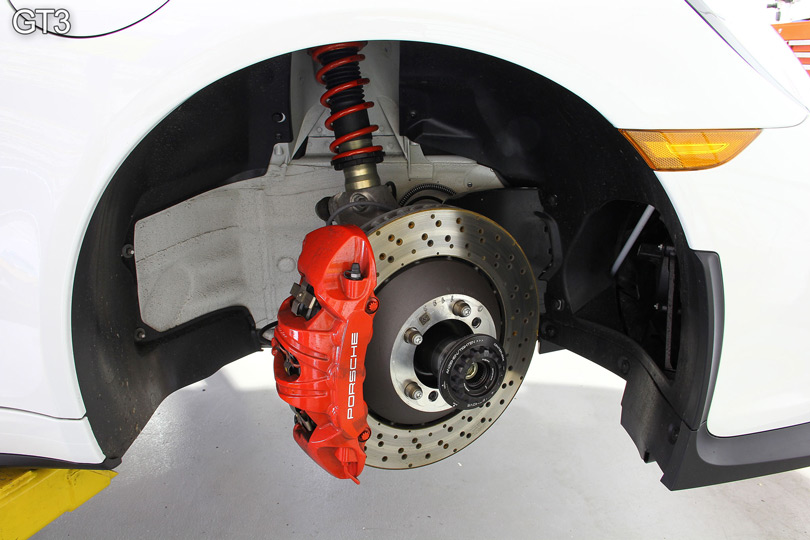
GT3 suspension above and Cup car suspension below.
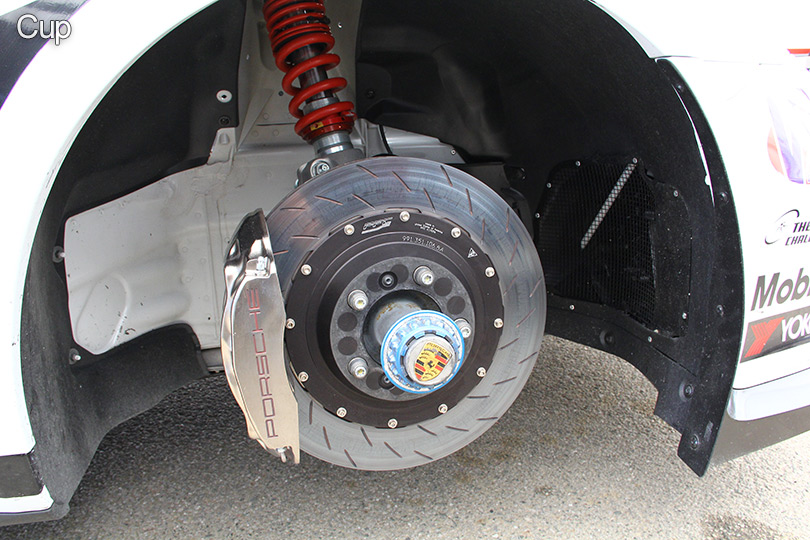
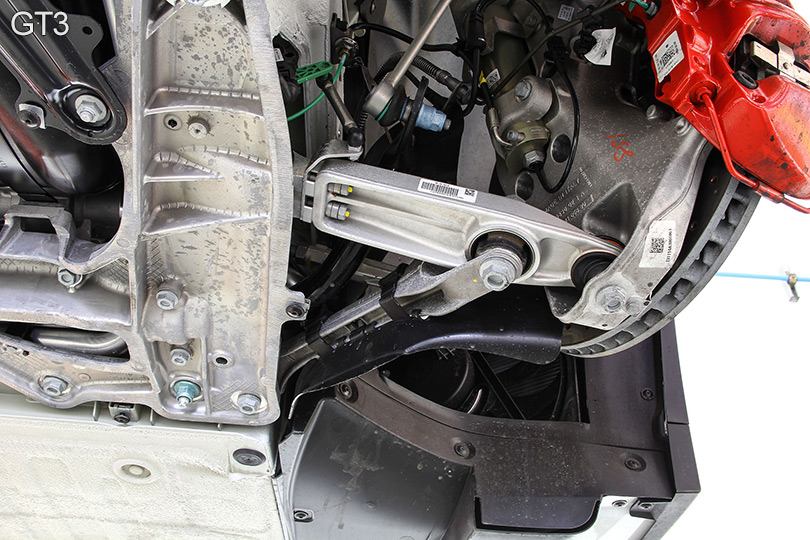
Let’s start with the front lower control arms. GT3 above and the Cup car below.
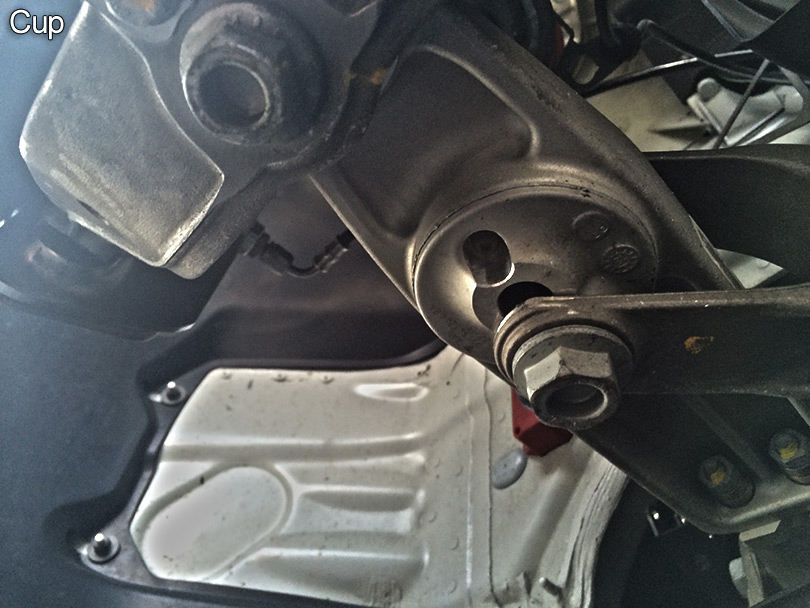
The front lower control arms are similar to the previous generation in that they are two-piece in design and length adjustable. The length can be expended by adding shims between the two sections, providing more negative camber and extending track width. Where they differ from previous generations is that the ball joint is no longer a stud. It is a secured with a bolt in a double shear arrangement that is much stronger.
The main difference between the GT3’s and the Cup Car’s control arm is the solid caster puck in the caster bushing position. This puck has two eccentric bores that can be used to adjust the caster. Rotating the puck adjusts the caster angle and each bore provides a different range of adjustment and offset.
The GT3 also has two bores in this place as well, however the rubber bushing cannot be rotated without being pressed out. The inner bore is set as default, and the outer bore is used to offset caster when the length of the lower control arms is extended beyond a certain range.
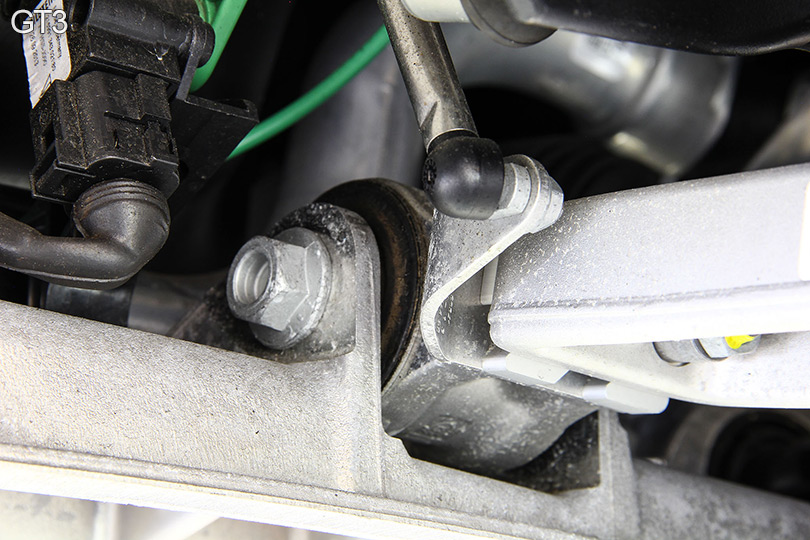
Also, the inner lower control arm bushings differ as well. The GT3 has a rubber bushing, while the Cup car features a spherical (monoball) bearing.
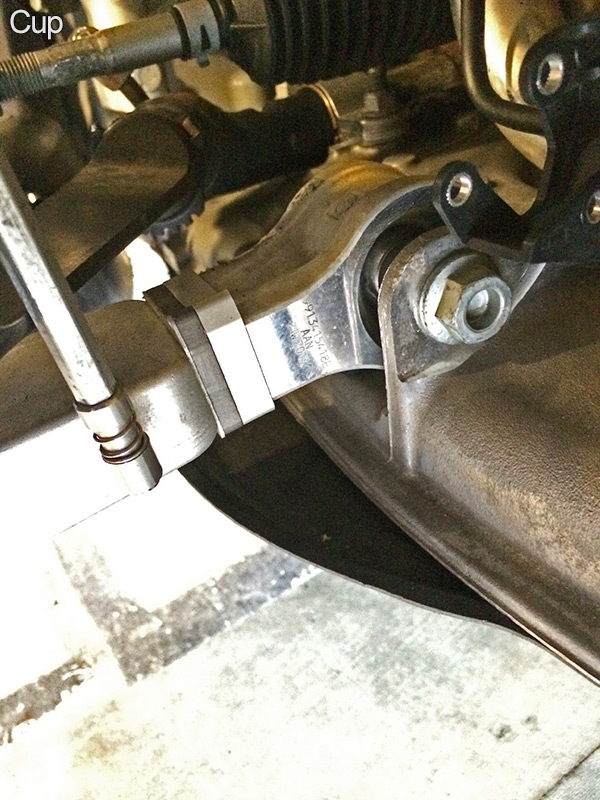
The Cup car bearing housing is also slightly longer than that of the GT3; this increases the width of the front track. The control arm is also generously shimmed.
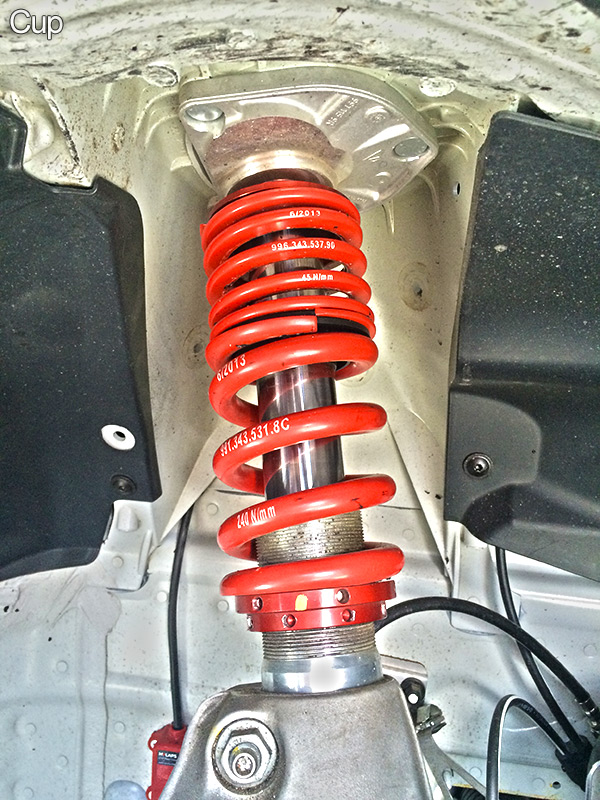
The strut of a cup car features two springs separated by a spring divider. The main spring is marked as 240 N/mm (1370 lbs/in) and the helper spring as 45 N/mm (257 lbs/in).
Helper springs are commonly used in conjunction with very stiff springs. They are relatively soft and short and fully collapse under the car’s weight. Under droop, the stiff main springs reach full length while the suspension still has more droop travel. This is when the helper springs function to keep the main spring properly seated on the spring perch.
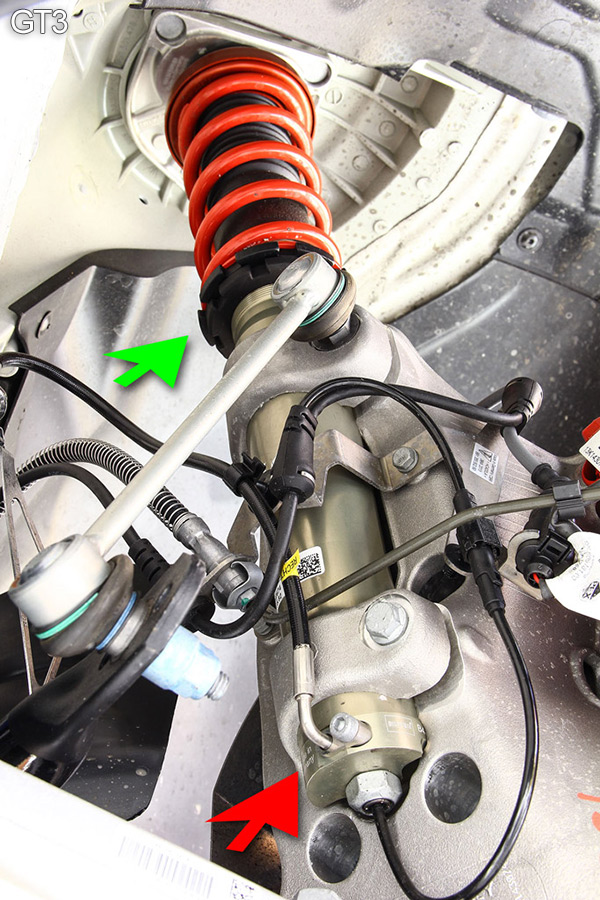
The GT3 features a single spring setup. Since the spring is longer and softer, it compresses much more than the stiff spring on the Cup car, eliminating the need for helper or tender spring.
Both cars are height adjustable by rotating the lower perch (green arrow).
The GT3 is also equipped with a front axle air lift kit (optional package, red arrow). This system is used for lifting the front to get over speed bumps and driveways (or iPhones). Obviously, the track only Cup car has very little use for that, so this option is omitted.
Both cars feature strut top camber plates with offset caster and spherical bearings. these camber plates differs greatly from the one found in the standard 991, which has rubber bushings and no caster offset.
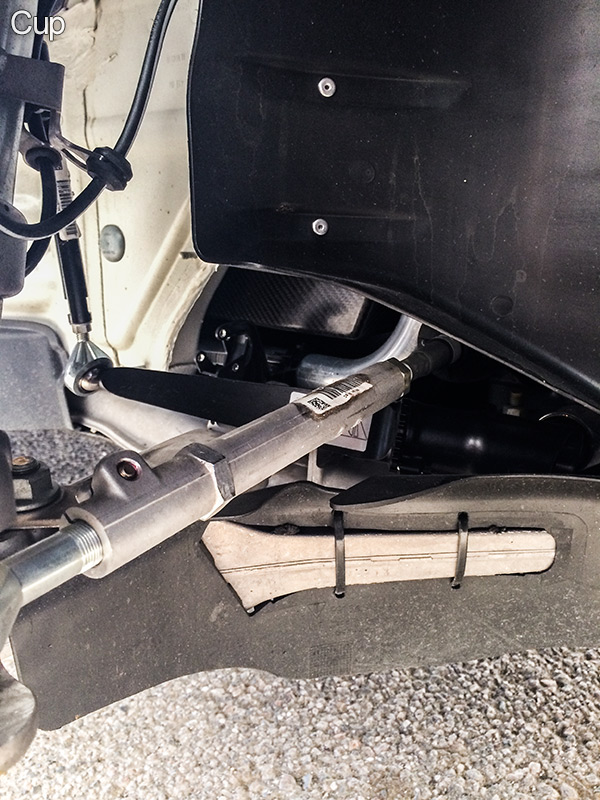
The cup car features an adjustable blade-style swaybar. The blade can be rotated to either stiffen or soften the bar. When the blade is aligned vertically it’s at full-stiff, and when aligned horizontally, it’s at full-soft, with unlimited amounts of positions in between.
Bladed style swaybars can provide a wider range of adjustment than regular adjustable swaybars. It also keeps the drop link geometry consistent.

The GT3 features an adjustable swaybar with three settings to choose from, the middle being default.
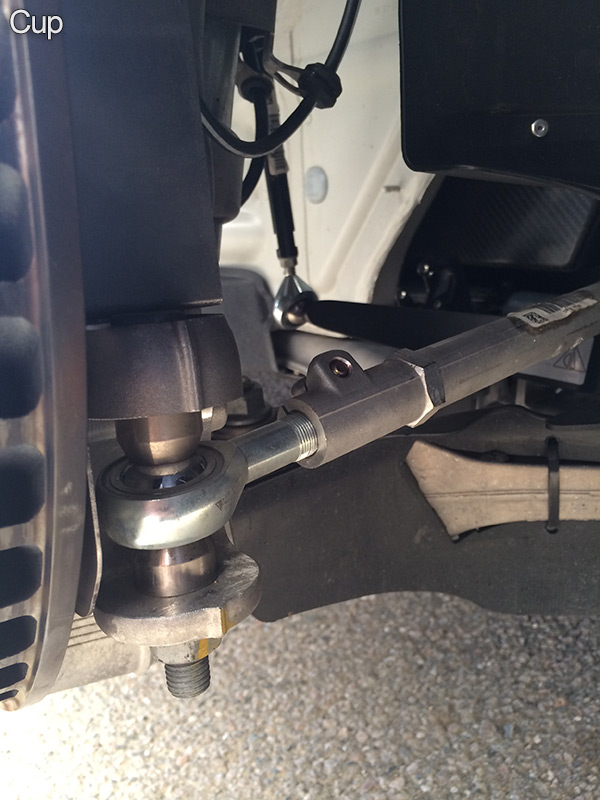
Also, the Cup car changed the outer tie rod to a double shear design from a stud-style single shear as found on all other 991 cars. The upright is also modified to accept this change.
Double shear tie rods were most likely chosen for track safety concerns. Double shear configuration is stronger, and the tie rod remains connected to the upright even if the spherical bearing fails – preventing complete loss of control of the wheel.
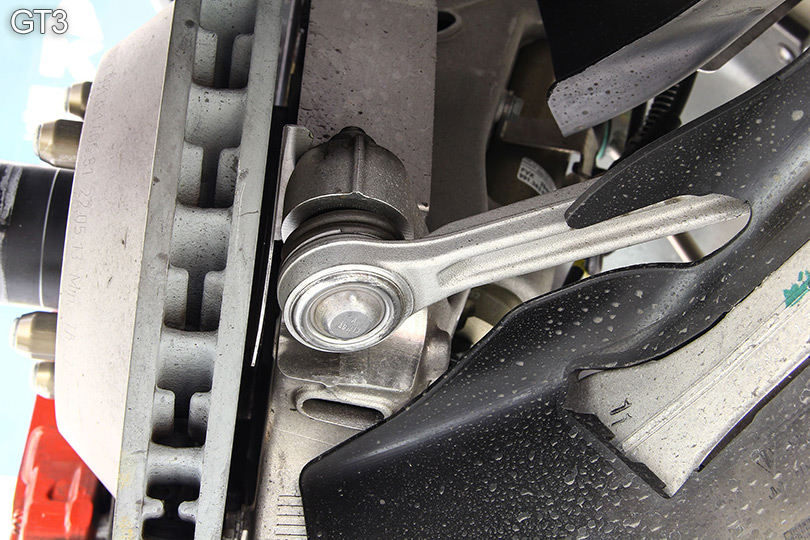
The GT3 uses a regular Carrera type tie rod with a single shear stud-type ball-joint setup. Other than missing the lower tie rod bracket, the GT3 upright seems identical to the Cup car.
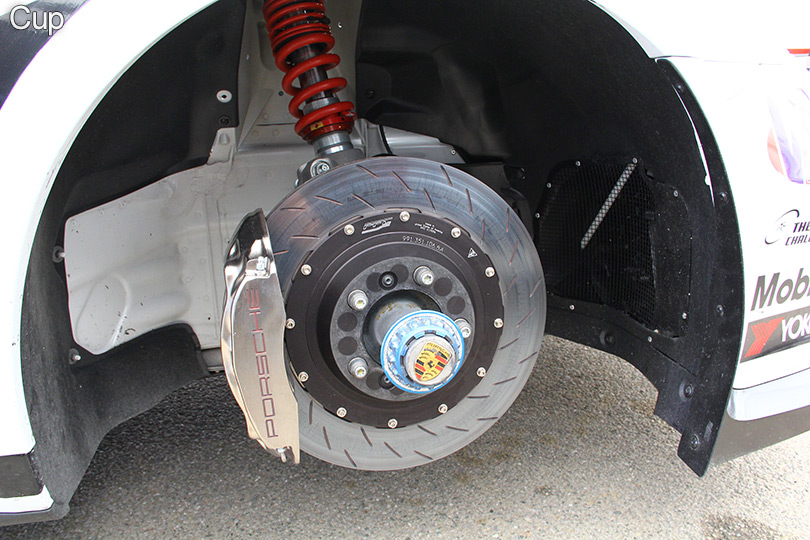
The brakes also differ. The GT3 uses a brake system manufactured by Brembo. The Cup car uses PFC brakes (Performance Friction Brakes Corp.) PFC calipers have six pistons, are nickel plated and appear to be more compact than the GT3 calipers. This could explain how the Cup car can fit an 18” wheel, while the GT3 struggles even with a 19” wheel.
The Cup car rotors are also manufactured by PFC, they are two-piece steel/aluminum design for rotational mass savings and 380mm in diameter. These rotors are slotted and center vented.
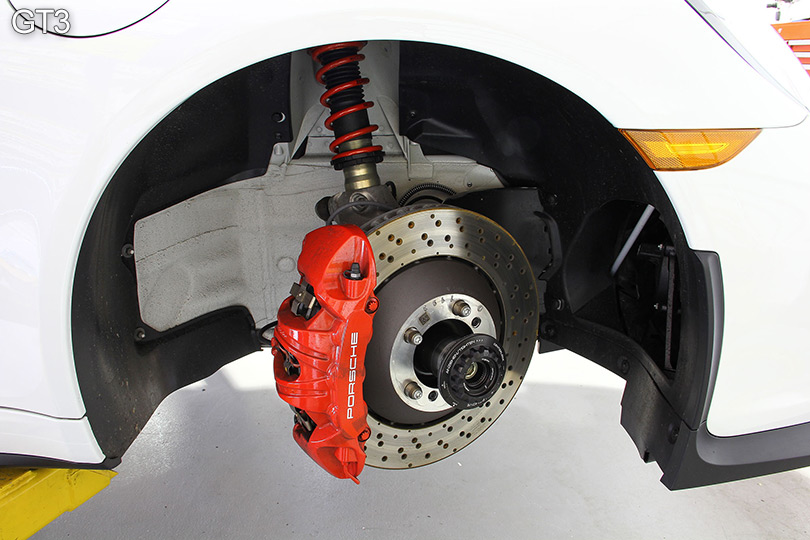
GT3’s Brembo brakes also feature 6 cylinder calipers. The rotors are also two-piece, steel/aluminum design and 380mm in diameter, but are cross-drilled instead of slotted.
Rear
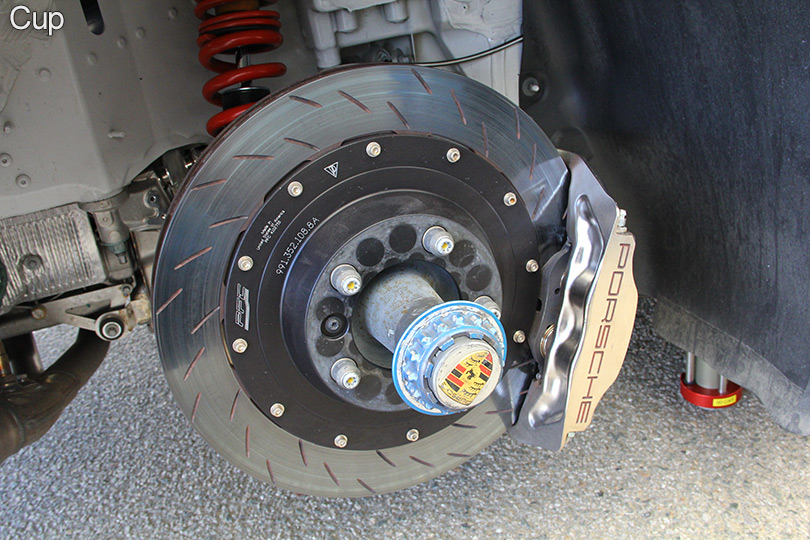
Since we finished off the front with the brakes, let’s start the rear with brakes. The rear Brakes of the Cup car are manufactured by PFC, just like the fronts — no surprise here. The Rotors are also 380mm in diameter just like the fronts but sports a smaller 4 piston caliper.
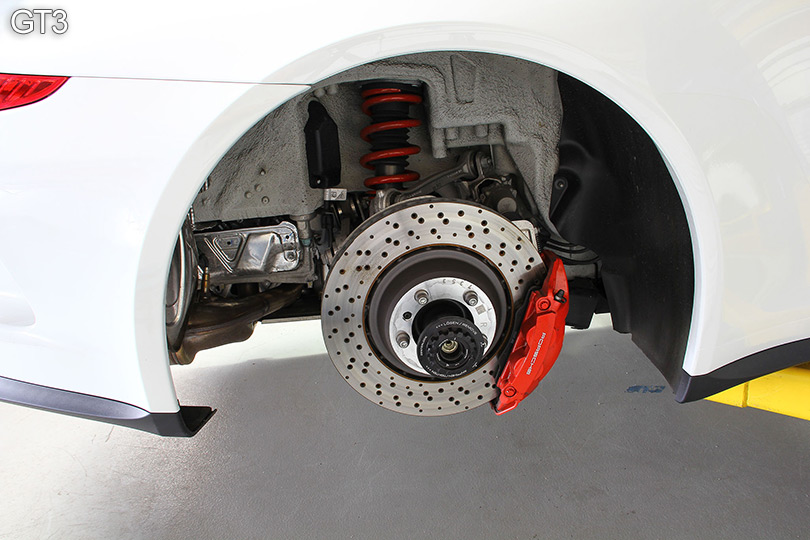
The GT3 rear brakes are manufactured by Brembo. Also feature a two piece, 380mm rotor and four piston calipers.
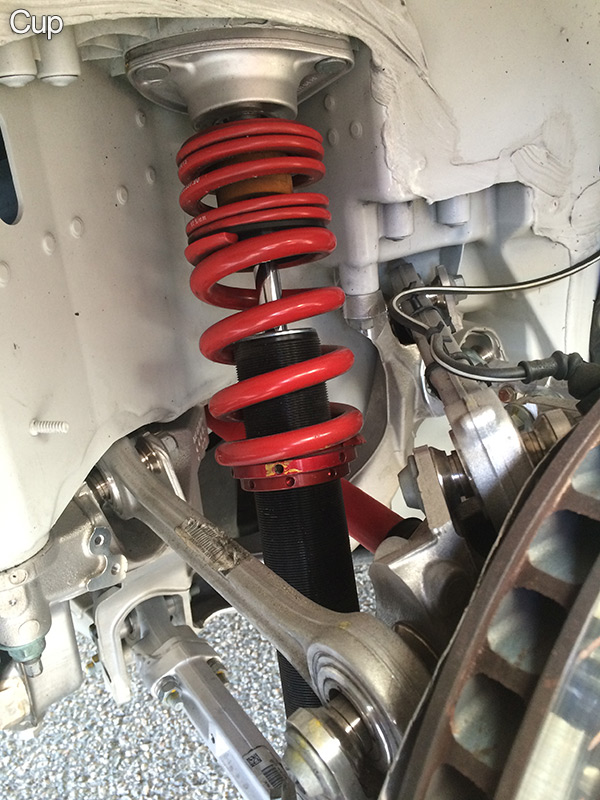
The rear coilover are length adjustable in both cars. Just like in the front, the rear shocks use a helper spring in conjunction with the man spring.
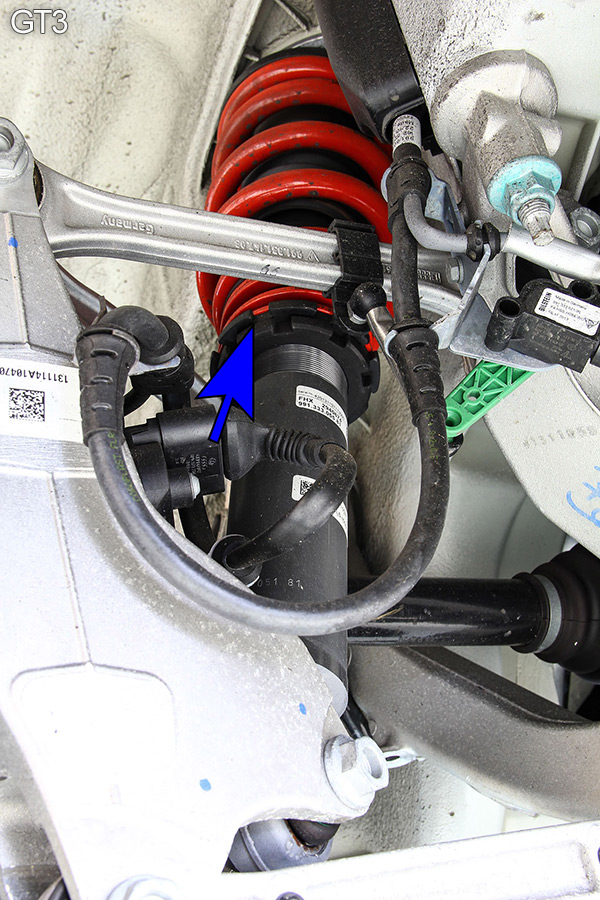
Likewise, the rear coilover of the GT3 is also height adjustable, however it lacks the same range of adjustment as the cup car; the cup shock is threaded almost entirely.
The rear shock of the GT3 also features a helper spring mounted below the main spring.
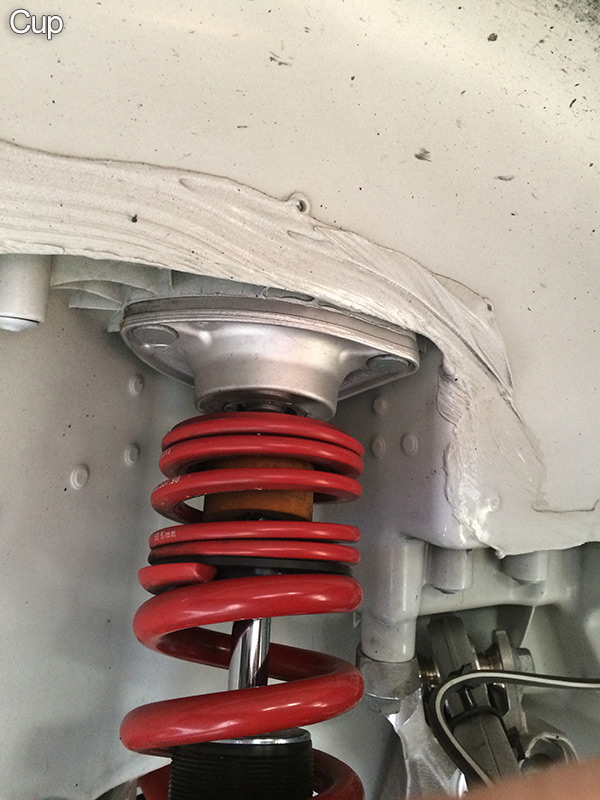
The upper shock mount of the Cup car features a spherical bearing.
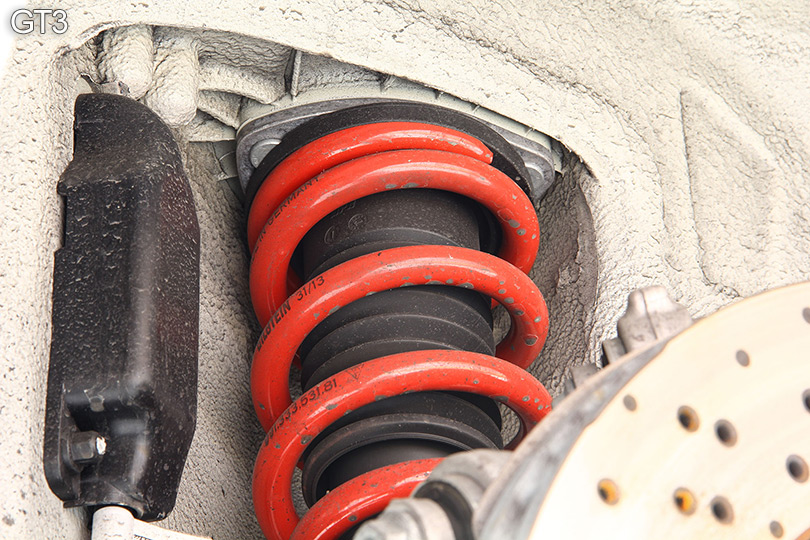
While the upper shock mount of the GT3 is rubber instead of spherical. It shares the shock mount with a standard 991 Carrera.
The GT3 spring load is borne directly by the chassis. The Cup spring load is focused on the spherical bearing using an upper spring perch. This allows the Cup rear spring to move with the rear shock, remaining concentric.
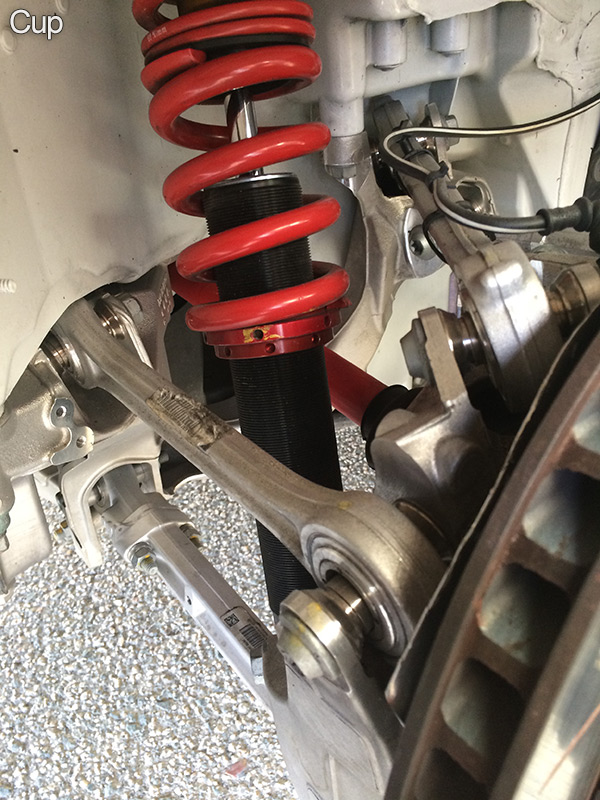
Another major difference is that the Cup car features spherical bearings in all control arm positions. This increases suspension precision. The spherical bearings maintain camber and toe alignment under heavy stress, making the car more responsive and predictable, and provide plenty of feedback to the driver.
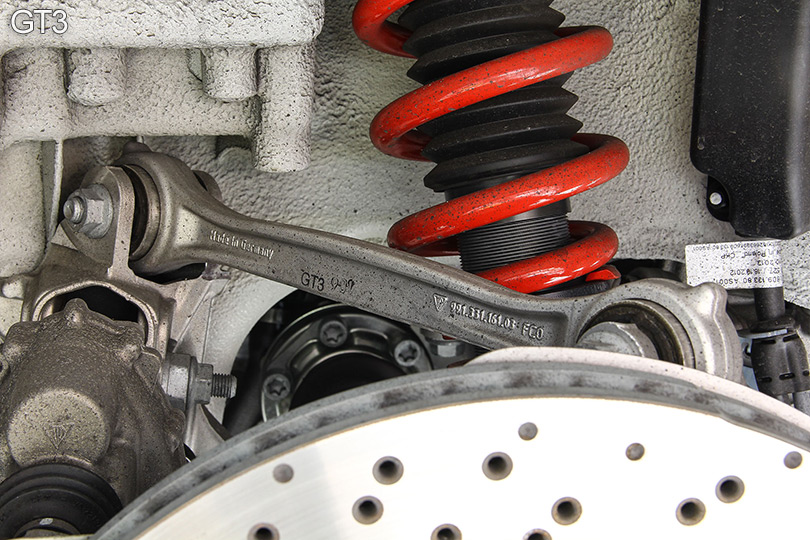
The GT3 retains rubber bushings in most positions just like the standard Carrera, however the bushings are reinforced with a solid metal layer, making them stiffer than bushings we find on the regular 911.
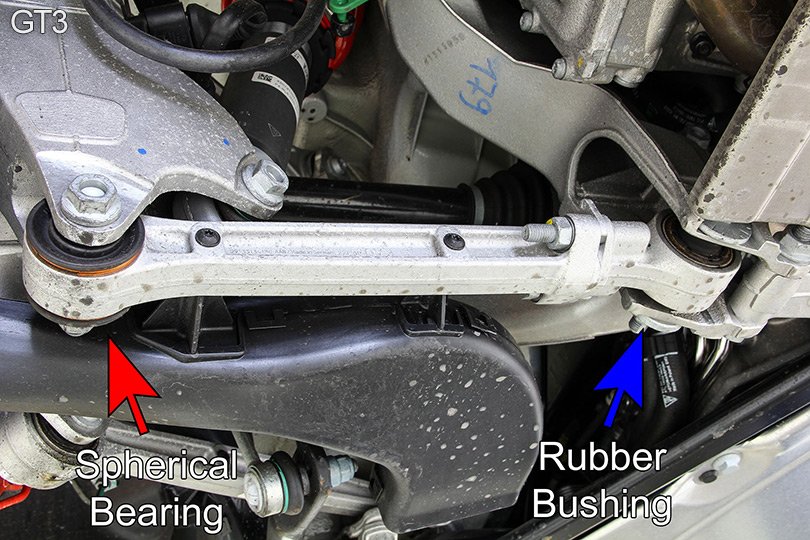
Spherical bearings can still be found on the GT3. The outer lower control arm bushings are spherical and protected with a rubber boot from road contaminates. The inner bushing remains rubber.
Rubber on street cars is commonly used because it’s inexpensive, long lasting, better at dampening noise and vibration resulting in more comfortable, quieter ride. The downside is that the rubber does deflect under stress encountered under heavy cornering, braking and acceleration, causing the alignment to shift making the car less predictable. Also the dampening property of the rubber reduces suspension feedback.
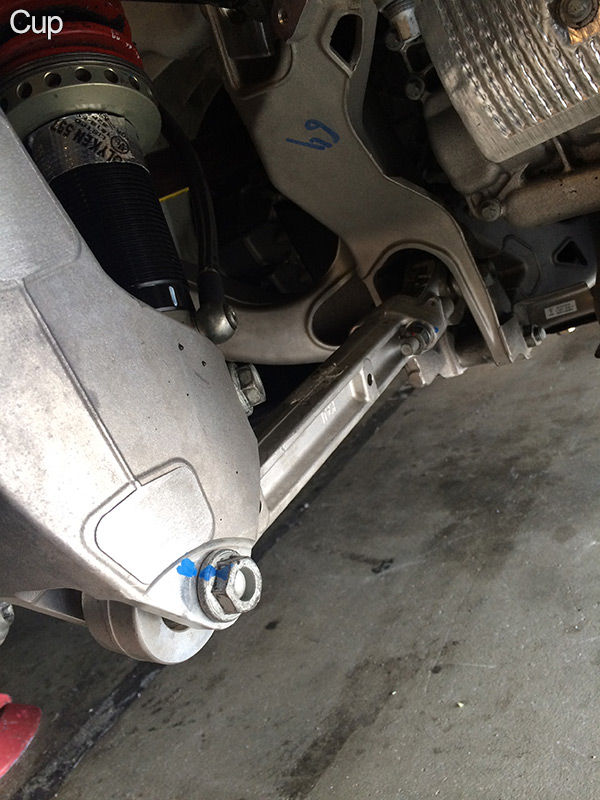
The lower control arms on the Cup car feature spherical bearings in both positions. Despite this, both Cup and GT3 lower control arms are very similar. They are two-piece in construction, and length adjustable with use of shims. Both ends attach in double shear arrangement.
These control arms are completely different than what’s found on the regular Carrera. The Carrera uses a wishbone type lower control arm with a bushing pressed into the upright.
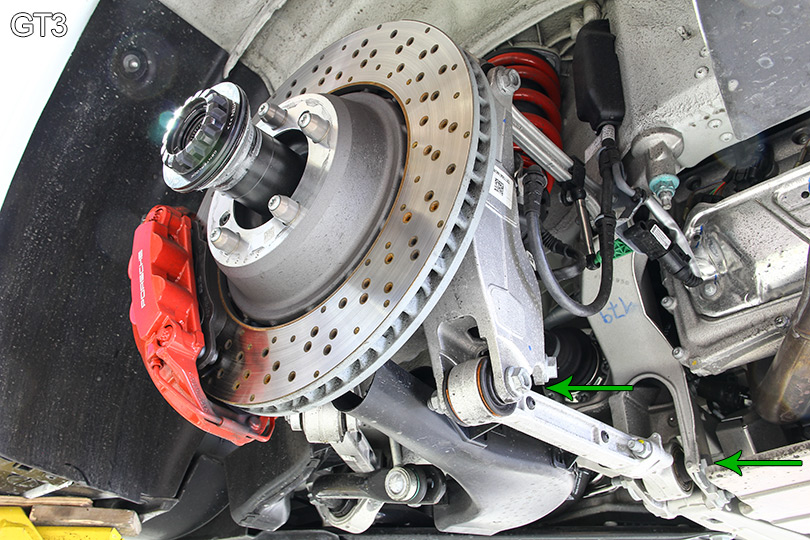
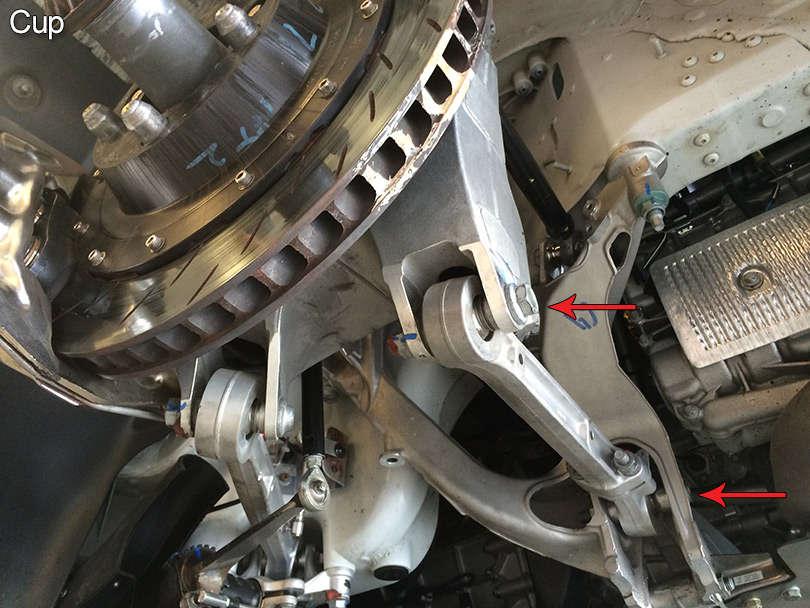
Another interesting observation that needs to be pointed is the placement of the lower control arm. Notice that control arm on the Cup car (Red arrow) is mounted significantly higher than on the GT3 (green arrow).
The lower bracket on the Cup car’s upright is trimmed to improve clearance.
This again explains how the cup car manages to squeeze in an 18” wheel while GT3 struggles with even a 19”.
It’s not immediately obvious if other control arm location has changed.
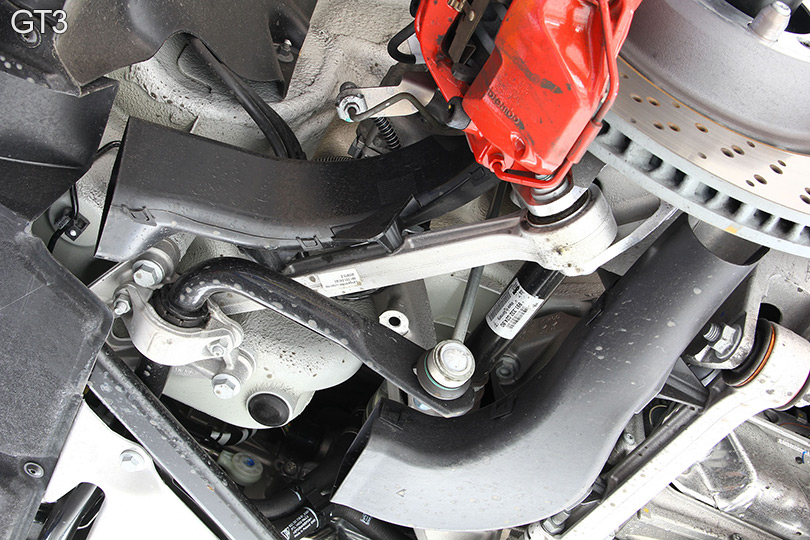
The diagonal lower control arms are also the same with the exception of spherical bearings as the GT3 features reinforced rubber bushings in both positions as well.
In both cars, the upright has been modified to accept the redesigned lower control arms. Both cars also share a similar subframe which is further redesigned and reinforced compared to a standard 991.
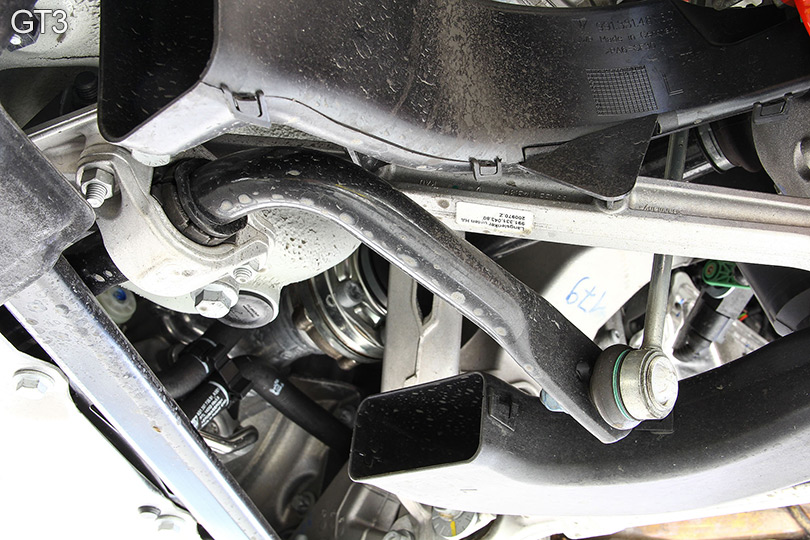
Just like the front swaybars, the rear swaybars on the GT3 are adjustable with three settings.
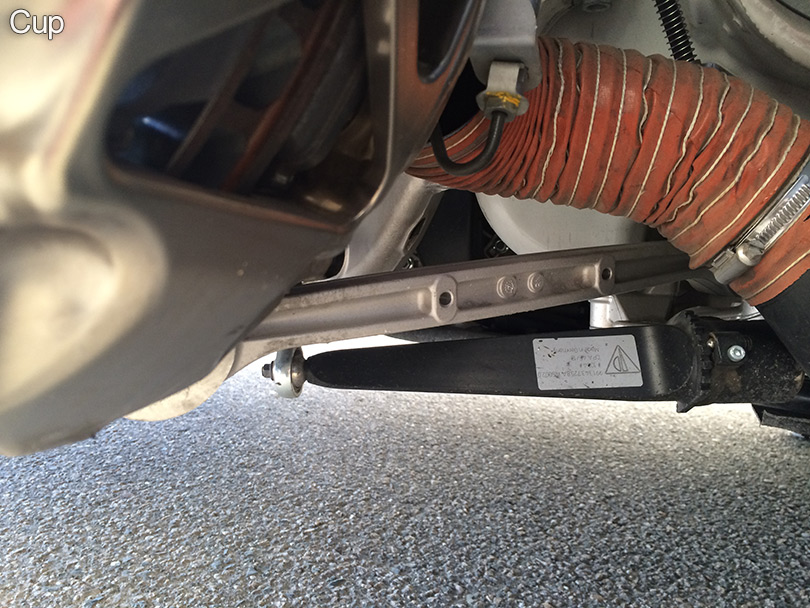
While the Cup car features bladed style swaybars.
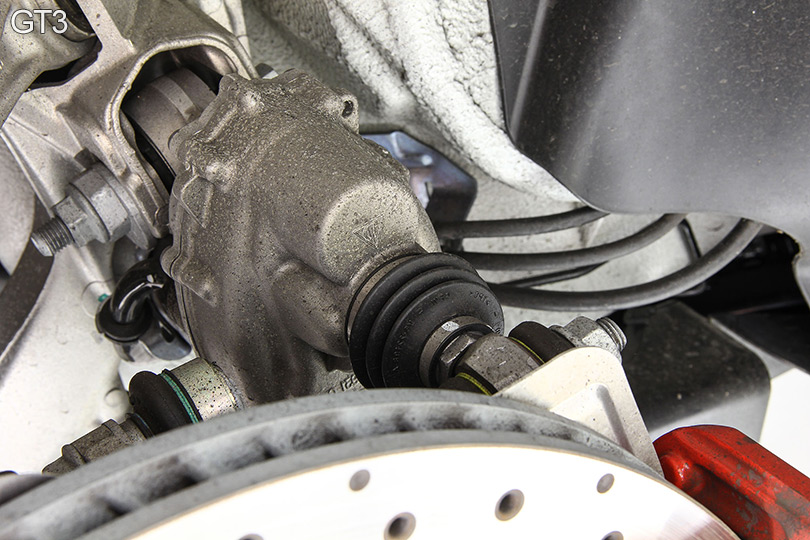
One of the most talked about features on the 991 GT3 is the introduction of the rear steering. The rear wheel counter steer up to 50 km/h to create an effective wheelbase that is shorter, and making the car more maneuverable. Above 80 km/h the wheels steer in the same direction for improved stability.
The actuator replaces the toe-link that is normally found in this location.
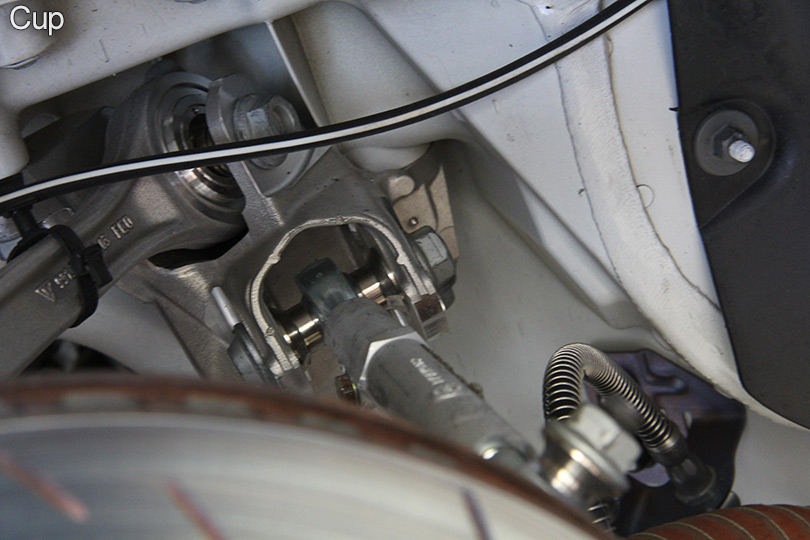
The Cup car however, retains the toe link. The toe link is length adjustable for increased toe adjustment range.
This covers major differences in the suspension itself.
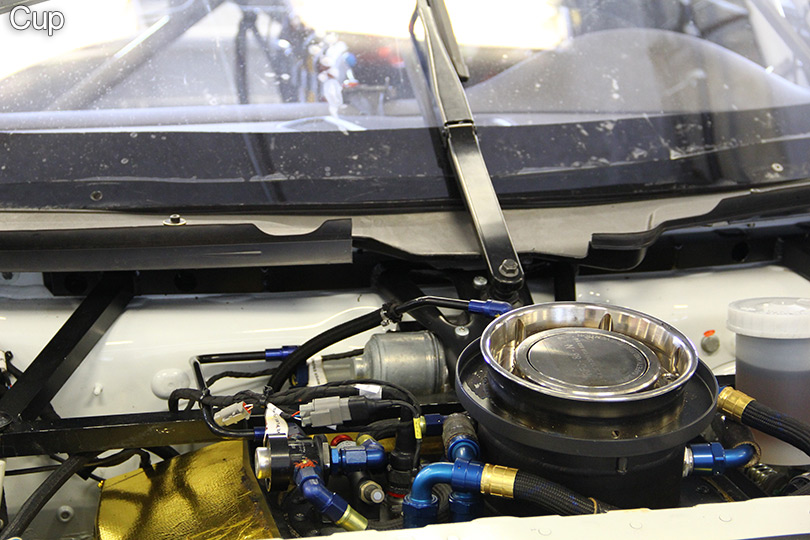
Other notable difference worth mentioning is the massive strut brace. The brace connects both struts to reduce the chassis flex. The GT3 is not equipped with any strut bracing.
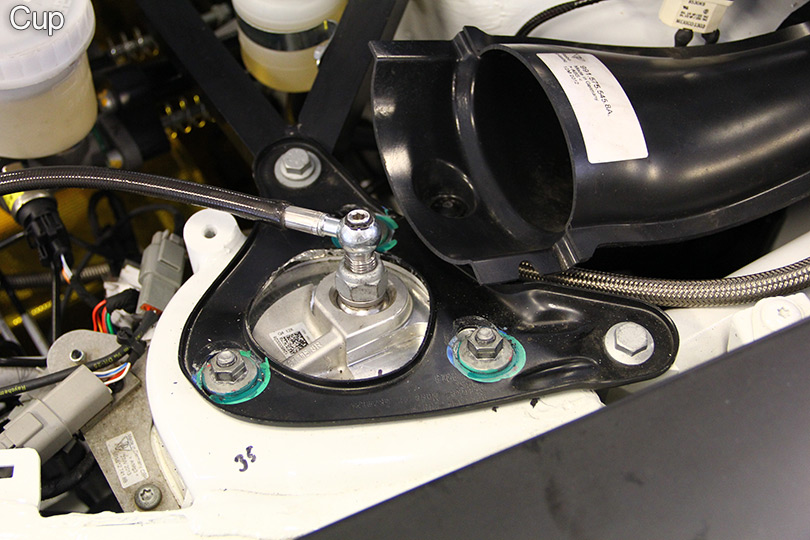
Brackets are mounted using the camber plate nuts and bolts.

It’s reinforced by bracing against the firewall right behind the dashboard. This brace also acts as a mounting bracket to hold the single-arm center wiper.
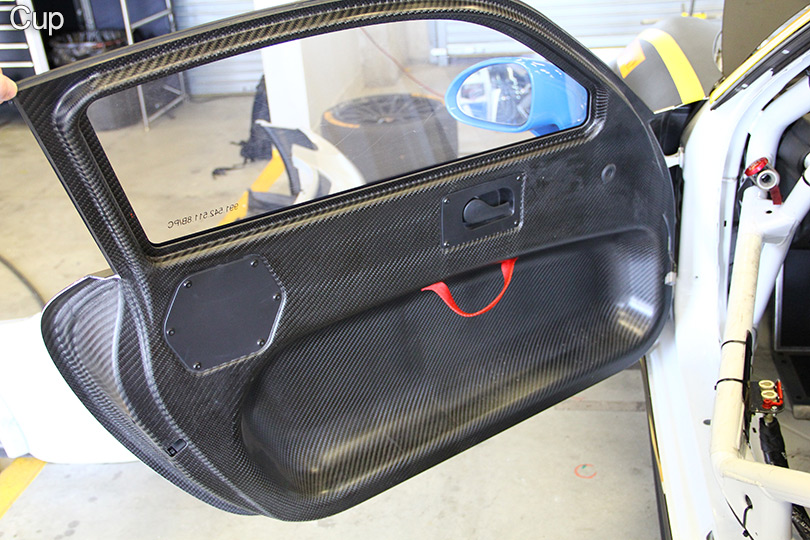
Extensive work has been done to lighten the chassis as well, including lightweight carbon fiber doors.
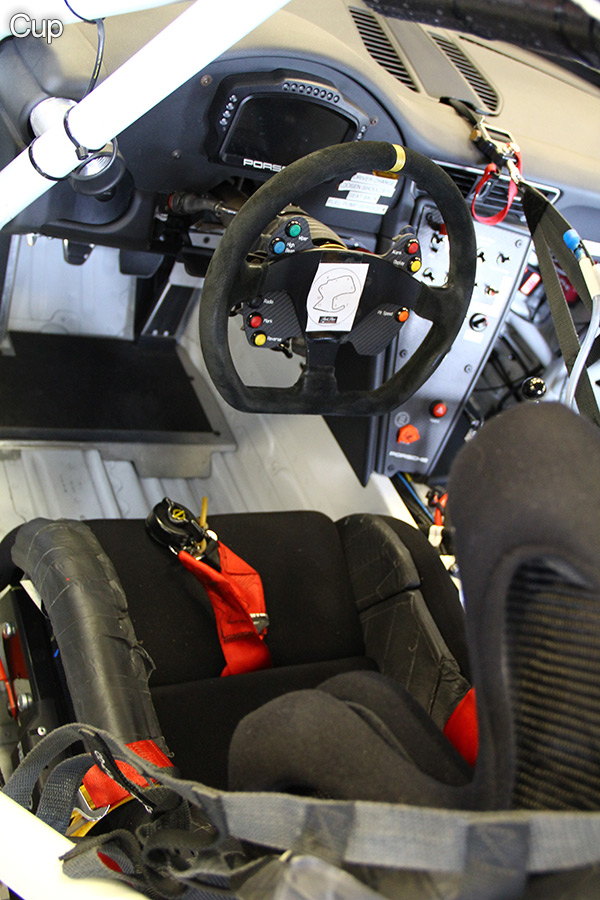
The interior is also completely gutted for weight saving measures.
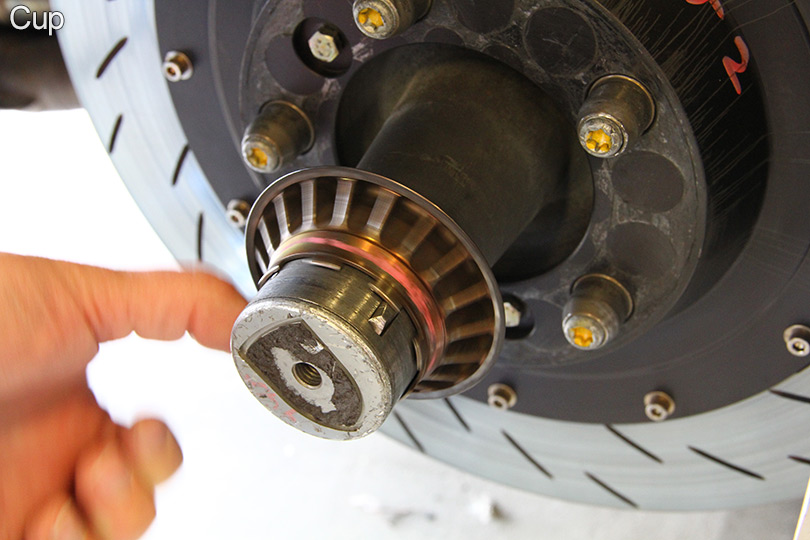
The center lock mechanism of the Cup car is also is very different, but we’ll cover more of that in the next post.
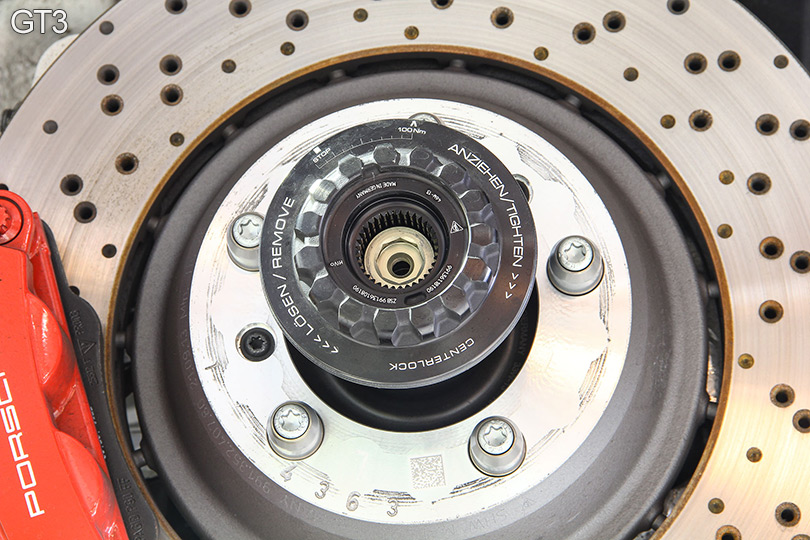
In conclusion, the cup car is a true example of a great race car, and although our beloved GT3 is missing some features, it is very close to the track-only cousin. The GT3 features a near-perfect mixture of street comfort and pure performance; borrowing components from the regular Carrera and the Cup racecar to make an impressive and versatile supercar. This comparison makes it clear that the GT3s suspension pendulum is swinging a lot more towards the Cup Car side than the regular Carrera side.
If you’re interested to learn more about the GT3 or the Carrera, please check out our previous 991 GT3 Suspension Overview and the 991 Carrera C2 S Suspension Overview.
Hope you enjoyed this 991 GT3 vs 991 Cup Car suspension Comparison. Thanks for reading.













